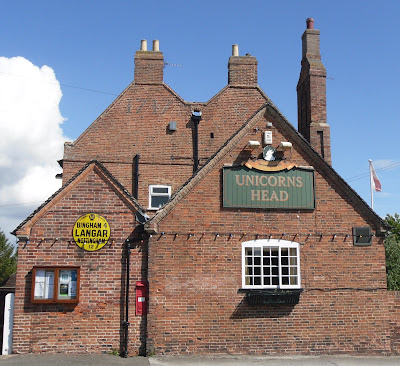Lynne Ramsay directed three shorts before the two features of hers which have been released so far.
Small Deaths (1996) is eleven minutes long and is Ramsay's graduation movie. It is in three sections. The first – 'Ma and Da' – is perhaps set in the 1970s and shows the young girl Anne Marie, with her mother in the kitchen combing her husband's hair in preparation for his night out with the lads in working-class Scotland. This prefigures the male-dominated Glasgow in Ramsay's first feature Ratcatcher, where there are also two (rather different) hair combing scenes. The second section is in a pastoral setting showing Anne Marie as a young teenager with her younger sister. Some young kids chase cows and the girls later watch a cow dying. The third section – 'Joke' – shows the older teenager Anne Marie with her boyfriend, who invites her into a room where a man and some youths pretend that a girl is in a coma after taking drugs.
In the eighteen-minute Kill the Day (1996), drug addict James Gallagher (played by James Ramsay) steals a handbag from a locker in a hospital, buys drugs with the proceeds and is subsequently imprisoned. Inside, he resists such temptations as drugs as he contemplates a cabbage leaf and fantasizes about the freedom that a cabbage field represents. He tries to get rid of his frustration (or the withdrawal symptoms) by working out in his cell.
He's released from prison, and there's a flashback of him running through the cornfields and nude bathing in the river with his young school (or truant) mates, until an ironic 'Greensleeves' alarm tune finds him back in his seedy room with its woodchip-covered walls. Ignoring the pusher's car outside, he continously bangs his head on the window in frustration. Or despair.
Gasman (1998) is fifteen minutes long and involves a working-class Glasgow woman getting her son and daughter ready for them to see her estranged husband at Christmas. The children are handed over on a railway line, taken by their father to a celebration of some kind, and then delivered back on the railway line at the end.
Ratcatcher is set on a grim working-class estate in Glasgow in 1973 at the time of the dustman's strike. Black bin bags are present everywhere, as are the rats. The main character is twelve-year-old James Gillespie (William Eadie), who lives with his parents, and whose father is an alcoholic and a womanizer. James has accidentally killed a young friend in the canal after a playful tussle, and this weighs heavily on his conscience.
In this bleak environment, James befriends a slightly older girl, Margaret Anne (Lenne Mullen), who is sexually exploited by a group of adolescents in the area. There are two innocent, tender moments in which James and Anne take a bath and sleep together. They are both deeply alienated by their surroundings.
At one point, James take a bus trip out to a new council housing estate
on Balmore Road and marvels at the (actually rather basic) facilities. There is an idyllic (and probably fantasized) scene when he finds a cornfield by the house, and this same field (definitely fantasized) is seen at the end, when the family carries furniture through it toward the house. Alas, the music of Nick Drake's 'Cello Song' (sample words 'So forget this cruel world/Where I belong') has some time before subtly suggested a different end.
Morvern Callar is based on Alan Warner's 1995 novel, and bears several of the hallmarks of Lynne Ramsay's earlier work. Again, this is set in working-class Scotland, although, like the novel, it is set not in Glasgow but in the small west coast port of Oban. And again, the eponymous protagonist (played by Samantha Morton) is young but somewhat older than either James or Margaret. She works in a supermarket with her friend Lanna (Kathleen McDermott) and earlier on the the two also show their togetherness by taking a bath together. But the central event is Morvern going back home to find her boyfriend has killed himself in the kitchen.
As in the book, we never find out the reason for the suicide, and likewise never know what is happening in Movern's head. Suffice to say that she chops up his body, loads it in installments into a rucksack and buries it, withdraws her boyfriend's money (over £3000), sends to a publisher the typescript he has thoughtfully left her to use any proceeds from (but she sends it under her name), and goes off to Spain with Lanna.
Unlike Ratcatcher, the dream here is reality, and after the two split up two publisher's representatives visit her in Spain (the movie was filmed in Almería) and offer her a £100,000 advance. Her secret reaction as she pretends to disappear to the toilet to 'consider': 'Fuckin' 'ell!' And the dream-come-true merges into a chemically induced dream as Morvern joins the rave culture.
So, Lynne Ramsay's preoccupations so far: rootlessness, working-class alienation, the fantasy life, problem parents and problem offspring, self-destruction, etc. And soon, Ramsay's eagerly awaited adaptation of Lionel Shriver's We Need to Talk about Kevin hits the cinemas. A broken home, a deeply disturbed child....oh, we'll wait and see what she's done with it. But who's betting there's a communal bath scene?
–––––––––––––––––––––––––––––––––––
Lynne Ramsay's We Need to Talk About Kevin (2011)

























